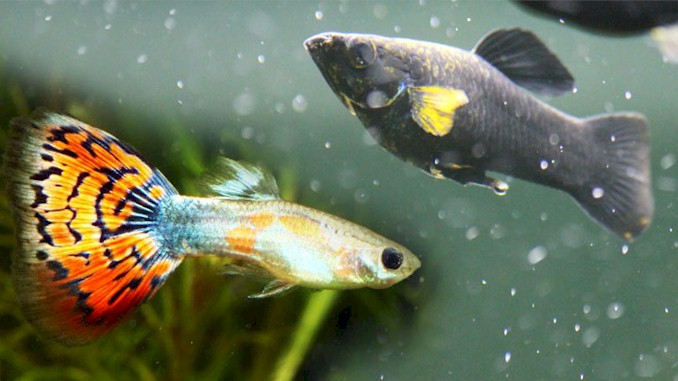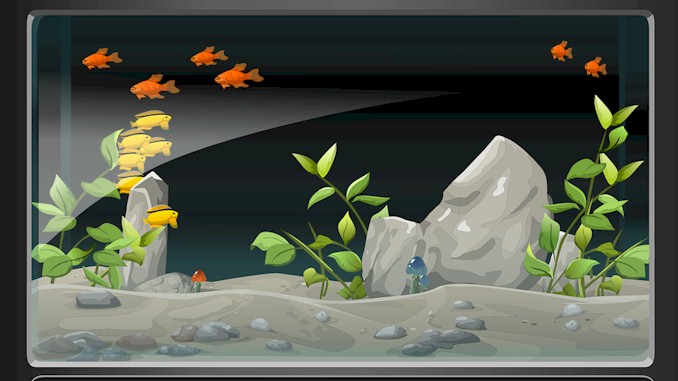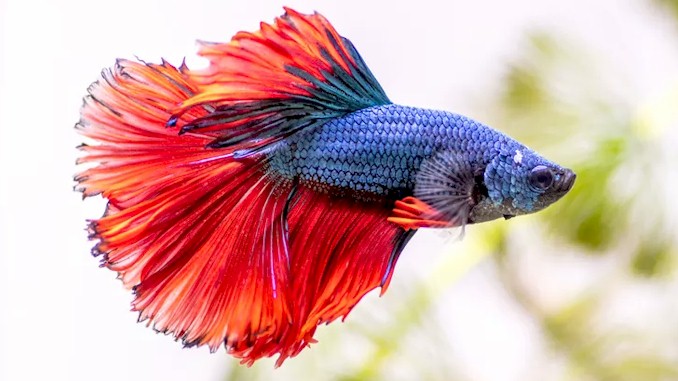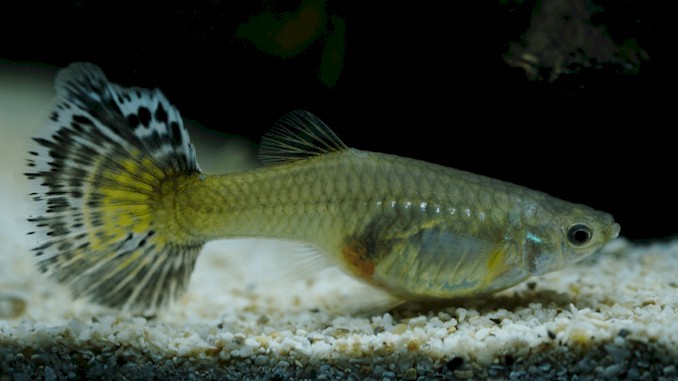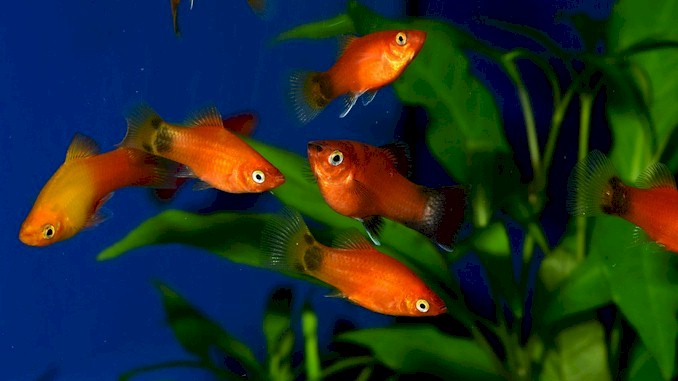The Ultimate Guide to Housing Guppies and Mollies Together
As an expert aquarist with years of experience in fishkeeping, I can confidently say that the question of whether Guppies and Mollies can live together is one that many beginners in the hobby have asked. It’s a common query with a simple answer, but it’s essential to understand the different needs of these two fish species before making a decision. In this comprehensive guide, I will provide you with everything you need to know to determine if Guppies and Mollies can coexist in the same aquarium, and if so, how to ensure they thrive in a healthy and happy environment. So, if you’re ready to learn more about these fascinating fish and make an informed decision, read on.
Guppies and Mollies can live together in the same aquarium. Both fish species belong to the same family, Poeciliidae, and have similar requirements for water temperature and quality. They are also peaceful fish and can coexist without any issues. However, it’s essential to note that Guppies are smaller and more delicate than Mollies and may require different feeding and care. With proper attention to their needs and environment, these fish can thrive together in a vibrant and colorful aquarium.
However, there’s much more to consider when it comes to keeping Guppies and Mollies together, and I’m excited to share my knowledge with you. In the following sections of this guide, I will dive deeper into the specifics of these fish, including their ideal tank conditions, compatibility with other fish species, feeding habits, and breeding tendencies. So, keep reading to discover everything you need to know about keeping Guppies and Mollies together.
Tank Set-Up: Creating the Ideal Habitat for Guppies and Mollies

The key to successfully keeping Guppies and Mollies together is to create an ideal habitat that meets the needs of both species. These fish require similar water parameters, but there are some key differences to consider when setting up their tank.
Firstly, it’s essential to choose a tank size that provides ample space for both fish to swim and thrive. Guppies are smaller fish and can thrive in a 10-gallon tank, while Mollies are larger and require at least a 20-gallon tank to accommodate their size. It’s best to choose a tank with a length of at least 24 inches, providing plenty of room for the fish to swim and explore.
Secondly, the temperature and water quality of the tank should be carefully monitored and maintained. Both Guppies and Mollies prefer a temperature range between 72-78°F, with a pH level between 7.0-8.5. It’s essential to keep the water clean and free from toxins, so regular water changes and the use of a reliable filter system are critical.
Finally, it’s essential to provide a varied and stimulating environment for the fish. Adding live plants, rocks, and driftwood can create hiding places and provide a natural habitat for the fish. Guppies also appreciate floating plants like water sprite or hornwort, which provide shade and a place to rest. Mollies are known to nibble on live plants, so it’s best to choose hardy species that can withstand their grazing.
By creating an ideal habitat that meets the needs of both Guppies and Mollies, you can ensure they thrive in a healthy and happy environment. Taking the time to carefully set up the tank and maintain its conditions will pay off in the long run, allowing you to enjoy the beauty and charm of these fish in your home aquarium.
Feeding Guppies and Mollies: Meeting the Nutritional Needs of Both Fish
Proper nutrition is crucial to the health and well-being of Guppies and Mollies. These fish have different dietary needs, and it’s important to ensure that they receive a well-rounded diet to maintain their health and vitality.
Guppies are primarily omnivorous, and their diet should consist of a mix of plant and animal-based foods. They will readily consume flake or pellet food designed for tropical fish, but they also enjoy live or frozen foods such as brine shrimp, bloodworms, and daphnia. It’s important to feed Guppies small meals multiple times a day, as they have small stomachs and can’t consume large amounts of food at once.
Mollies, on the other hand, are primarily herbivorous, and their diet should consist of a mix of algae and vegetable-based foods. They will readily consume algae wafers or pellets, as well as fresh or frozen vegetables such as spinach or zucchini. It’s important to avoid overfeeding Mollies, as they have a tendency to overeat and become overweight, which can lead to health issues.
It’s also essential to ensure that both Guppies and Mollies receive a varied diet that meets all of their nutritional needs. Commercial fish foods designed for tropical fish can provide a good base, but supplementing their diet with live or frozen foods can provide essential nutrients and promote optimal health.
One key consideration when feeding Guppies and Mollies together is that Guppies are smaller and may have trouble competing with Mollies for food. It’s important to ensure that both species receive adequate food by feeding them separately or adding multiple feeding stations to the tank.
In summary, meeting the nutritional needs of Guppies and Mollies requires careful attention and a well-rounded diet. Providing a mix of plant and animal-based foods and supplementing their diet with live or frozen foods can promote optimal health and vitality. By understanding their dietary needs and feeding them appropriately, you can ensure that your fish thrive in a healthy and happy environment.
Compatibility with Other Fish: Can Guppies and Mollies Coexist with Different Fish Species?
When considering adding Guppies and Mollies to a community tank, it’s important to consider their compatibility with other fish species. Guppies and Mollies are both peaceful fish and generally get along well with other non-aggressive fish. However, there are some key considerations to keep in mind.
One important factor to consider is the size of the other fish in the tank. Guppies and Mollies are small fish and may be viewed as prey by larger, more aggressive fish. It’s important to avoid adding fish that are significantly larger than Guppies and Mollies to the tank to prevent them from becoming targets.
Another factor to consider is the temperament of other fish species. Guppies and Mollies are both peaceful fish and may be intimidated or harassed by more aggressive fish. It’s important to choose fish that have a similar temperament to Guppies and Mollies to ensure that they can coexist peacefully in the tank.
Some fish species that are compatible with Guppies and Mollies include other small, peaceful community fish such as tetras, gouramis, and corydoras. It’s important to research the specific needs and compatibility of any fish species you plan to add to your tank to ensure that they are a good match for Guppies and Mollies.
It’s also important to consider the gender ratio of Guppies and Mollies when adding them to a community tank. Male Guppies and Mollies can be aggressive towards each other, so it’s important to keep a higher ratio of females to males in the tank to prevent aggression and ensure a peaceful environment.
Guppies and Mollies are generally compatible with other small, peaceful community fish species. However, it’s important to consider the size and temperament of other fish in the tank and to maintain a proper gender ratio of Guppies and Mollies to prevent aggression and ensure a peaceful environment. By carefully selecting compatible fish species and maintaining a harmonious tank environment, you can create a thriving and beautiful aquatic community.
Breeding Guppies and Mollies: Tips for Successful Breeding in a Community Tank
Breeding Guppies and Mollies can be a rewarding experience for aquarium enthusiasts. Both species are known for their high reproduction rates, and breeding can occur quickly in a well-maintained community tank. However, there are some important factors to consider when breeding Guppies and Mollies to ensure the success of the breeding process.
One of the most important factors to consider is the gender ratio of Guppies and Mollies in the tank. To successfully breed Guppies and Mollies, it’s important to maintain a higher ratio of females to males. This can prevent aggression between males and ensure that females have multiple potential mates to choose from.
Another key factor to consider is the environment of the tank. Guppies and Mollies prefer warm water temperatures, between 75-82°F, and a pH level between 7.0-8.5. The addition of live plants, such as Java Moss or Hornwort, can also provide hiding spots for newborn fry and help to maintain water quality.
Feeding is also an important aspect of successful breeding. Both Guppies and Mollies are omnivorous and require a varied diet of both plant and animal-based foods. Providing a balanced diet, including flakes, pellets, and live or frozen foods, can help to promote healthy breeding and growth.
One of the challenges of breeding Guppies and Mollies in a community tank is ensuring the survival of the newborn fry. Adult fish may see the small fry as food, and it’s important to provide hiding places for them to avoid being eaten. A breeding trap or a separate breeding tank can also be used to isolate pregnant females and newborn fry until they are large enough to be introduced to the community tank.
Finally, it’s important to monitor the water quality of the tank during the breeding process. Frequent water changes, testing for ammonia and nitrite levels, and maintaining proper filtration can help to ensure a healthy environment for both adult fish and newborn fry.
Breeding Guppies and Mollies can be a fun experience for aquarium enthusiasts. By maintaining the proper gender ratio, providing a suitable environment, feeding a balanced diet, providing hiding places for newborn fry, and monitoring water quality, you can increase your chances of successful breeding in a community tank.
Common Health Issues: Identifying and Treating Illnesses in Guppies and Mollies
Like all living organisms, Guppies and Mollies can experience health issues that can impact their well-being. As a responsible aquarium owner, it’s important to be aware of the most common health issues that can affect these species, as well as the signs to look out for and the appropriate treatment options.
One of the most common health issues for Guppies and Mollies is fin rot, which is caused by a bacterial infection. This can cause the fins to become frayed and discolored, and in severe cases, the infection can spread to the body of the fish. Treatment for fin rot typically involves the use of antibiotics and improving the water quality of the tank.
Another common health issue is swim bladder disease, which can cause the fish to have difficulty swimming upright or to float to the surface or sink to the bottom of the tank. This condition can be caused by a variety of factors, including overfeeding, constipation, or bacterial infection. Treatment options may include adjusting the diet, providing a lower water level, or the use of medications.
Ich is another common health issue that can affect Guppies and Mollies. This is a parasitic infection that can cause white spots to appear on the fish’s body and fins. Treatment options may include raising the water temperature, using medications, and improving the water quality of the tank.
Other health issues that can affect Guppies and Mollies include velvet disease, fungal infections, and dropsy. Symptoms of these conditions may include changes in behavior, appearance, or appetite. Treatment options may include the use of medications, improving water quality, and adjusting the diet.
Being aware of the common health issues that can affect Guppies and Mollies is an important part of being a responsible aquarium owner. By monitoring the health of your fish, keeping the water quality of the tank at appropriate levels, and seeking appropriate treatment options when necessary, you can help to ensure the long-term well-being of your aquatic pets.

